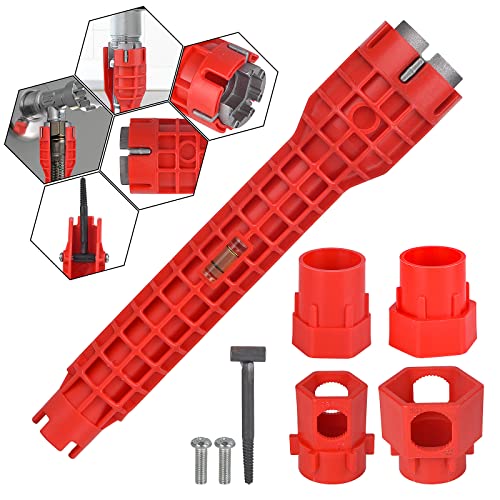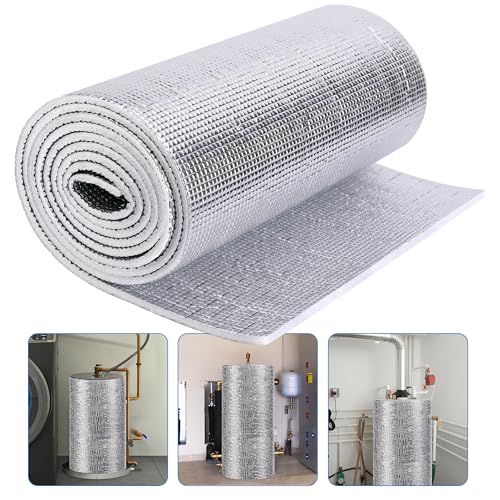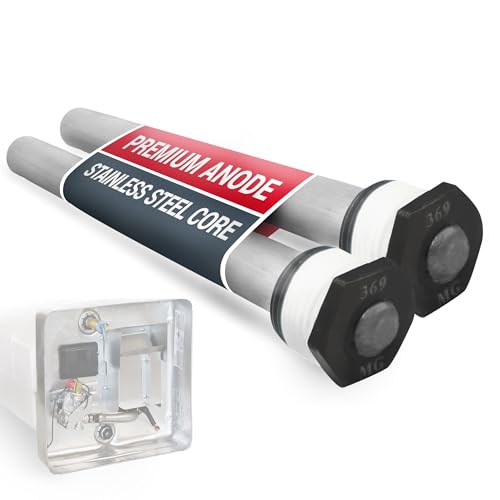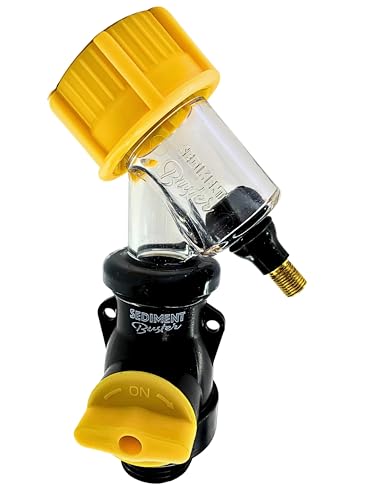You are using an out of date browser. It may not display this or other websites correctly.
You should upgrade or use an alternative browser.
You should upgrade or use an alternative browser.
Random plumbing pics
- Thread starter Twowaxhack
- Start date

Help Support Plumbing Forums:
This site may earn a commission from merchant affiliate
links, including eBay, Amazon, and others.
Great job
Good looking job. Are you going to install a shower curtain, or fit glass inside?
Good looking job. Are you going to install a shower curtain, or fit glass inside?
They are going to try a curtain and if they don’t like it install a door. A door limits access and one day they may need help to get in and out.
I have 3 moen grab bars to install. I decided to get out of there my father bugging crap outta me. He’s a master plumber too.....
Lol.

$42.56
$49.60
RIDGID 29983 Model 223S 1/4" to 1-1/4" Inner/Outer Copper and Stainless Steel Tubing and Pipe Reamer, Small
Amazon.com

$45.56
$69.99
Rain Bird LNDDRIPKIT Drip Irrigation Landscape/Garden Watering Kit with Drippers, Micro-Bubblers, Micro-Sprays
Amazon.com

$345.00
3M Aqua-Pure Whole House Sanitary Quick Change Water Filter System AP903, Reduces Sediment, Chlorine Taste and Odor, Heavy Duty, 100,000 Gallon
Buying Direct Corp: Free & Fast Shipping

$24.79 ($6.20 / Count)
$31.99 ($8.00 / Count)
1 Micron 2.5" x 10" Whole House CTO Carbon Water Filter Cartridge Replacement for Under Sink Water Filter System, Dupont WFPFC8002, WFPFC9001, FXWTC, SCWH-5, WHEF-WHWC, WHCF-WHWC, AMZN-SCWH-5, 4Pack
PUREPLUS FILTERS

$27.19
$32.15
RIDGID 57003 EZ Change Plumbing Wrench Faucet Installation and Removal Tool
Amazon.com
Lol.
He told me I needed to lose a little weight.
We’re on the second floor near these huge windows. I tell him he needs to grow wings because I’m about to launch you out the window. Go sit you ass down
That shower look great! I miss working on projects with my dad. Ended up being like 2 of the 3 stooges bc he would not pay attention to where I was standing and sometimes turn while carrying something and hit me with it. And drip paint on my head if I was painting low while he was painting high. But we'd have some good laughs about it.
Friend finally had time to come out and work on the float lever. I want to stabilize it more and put some sort of cover over the switch bc the default cover won't fit properly.



Friend finally had time to come out and work on the float lever. I want to stabilize it more and put some sort of cover over the switch bc the default cover won't fit properly.



Leak 18-24” down. 1” copper is almost broken in half. It’s 60 yrs old.
I got the water off at the meter and I’m letting it dry for a couple days. Building is not occupied.
View attachment 34839
(re)looking at this and wondering why the leak is at the curb but "after" the meter!?
HAPPY HUG A PLUMBER DAY!
There is an absolute master who has offered us the comfort and security that we have come to expect from life. They labor every day to guarantee that you have running water in your house, that your bathroom could wash away the unidentifiable effects of someone being a person, and that your clothing can be washed while also removing the filth that has stained them.
Hug A Plumber Day serves as a reminder to laud the virtues of these vital males and females who ensure that contemporary life is kept clean. Since Roman Times, plumbers have maintained the water running. Many of you are those masters.

There is an absolute master who has offered us the comfort and security that we have come to expect from life. They labor every day to guarantee that you have running water in your house, that your bathroom could wash away the unidentifiable effects of someone being a person, and that your clothing can be washed while also removing the filth that has stained them.
Hug A Plumber Day serves as a reminder to laud the virtues of these vital males and females who ensure that contemporary life is kept clean. Since Roman Times, plumbers have maintained the water running. Many of you are those masters.

I hope Hallmark has greeting cards for those unsung heroes. God bless them all!
fairfieldfanatic
Member
- Joined
- Mar 21, 2022
- Messages
- 16
- Reaction score
- 9
First pic is when I decided to go all stainless for gas fittings. I bought a few fittings to check the quality. I love stainless......customers lap it up like ice cream.
Second pic is what I found on the top floor of a 3 story condo. Crazy huh ?
Third pic I was installing some sewer pipe....
Fourth pic is a 1” type L 2# silver brazed natural gas branch main for a residence.
Fifth pic is a commercial pool heater I pipes the gas to. Copper and stainless.
1.25” gas regulator to step down the pressure. The gas line in pic 4 serves this heater.
[/QUOTE
Stainless npt fittings. I suspect they are 303 or other free machining alloy. Any problems with gauling or seizing? Austenitics usually are difficult to work with, but 303 avoids problems by adding sulfur to improve machinability and become better for non-seizing. Problem is, some chemists refuse to use it because they regard it as a “dirty” alloy because of the sulfur content - even after acidic passivation. Love the idea for piping natural gas to control corrosion from the inherent hydrogen sulfide. I do wonder - are the threads cut smooth like brass and can you get a full seal without tape or compounds?First pic is when I decided to go all stainless for gas fittings. I bought a few fittings to check the quality. I love stainless......customers lap it up like ice cream.
Second pic is what I found on the top floor of a 3 story condo. Crazy huh ?
Third pic I was installing some sewer pipe....
Fourth pic is a 1” type L 2# silver brazed natural gas branch main for a residence.
Fifth pic is a commercial pool heater I pipes the gas to. Copper and stainless.
1.25” gas regulator to step down the pressure. The gas line in pic 4 serves this heater.
They’re 316L and I use pipe dope. No problems.Stainless npt fittings. I suspect they are 303 or other free machining alloy. Any problems with gauling or seizing? Austenitics usually are difficult to work with, but 303 avoids problems by adding sulfur to improve machinability and become better for non-seizing. Problem is, some chemists refuse to use it because they regard it as a “dirty” alloy because of the sulfur content - even after acidic passivation. Love the idea for piping natural gas to control corrosion from the inherent hydrogen sulfide. I do wonder - are the threads cut smooth like brass and can you get a full seal without tape or compounds?
I don’t use the stainless fittings to stop the gas from attacking it, I use stainless to avoid weather corrosion.
We also use copper that does get attacked by the mercaptan that’s used in the gas. Our gas is pretty dry so corrosion is limited.
We also use copper that does get attacked by the mercaptan that’s used in the gas. Our gas is pretty dry so corrosion is limited.























































